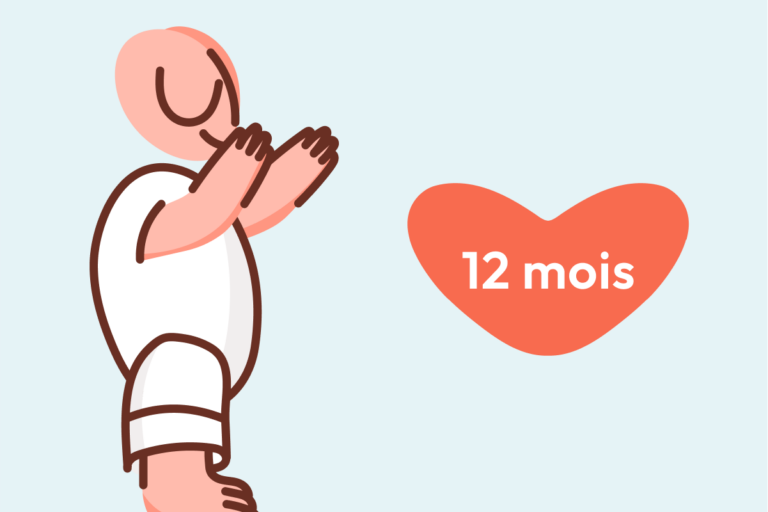Managing baby sleep 4 to 12 months often resembles trying to solve a puzzle where each piece keeps shifting just as you think you have it in place. Days may feel long, nights even longer, and expectations set by relatives or well-meaning friends often only add to the jumble of doubts and questions. Why does your little one suddenly wake every hour, after sleeping so well last week? Is it normal for naps to change overnight – sometimes lasting mere minutes, other times stretching on unexpectedly? During this remarkable period, the evolution of sleep habits, influenced by scientific principles ranging from neurological “sleep architecture” to circadian rhythm development, impacts not just the baby’s development but the household’s sense of harmony. Let’s unravel the medical nuances, the expected bumps—like dreaded regressions and nap transitions—and, most importantly, the practical, evidence-based ways to support your child’s flourishing while safeguarding your sanity. Here, your questions will find answers, and anxieties may finally begin to loosen their grip.
Understanding baby sleep 4 to 12 months: developmental patterns and milestones
How sleep needs evolve: hours, naps, and biological shifts
Across baby sleep 4 to 12 months, total sleep duration typically floats between 12 to 16 hours in 24 hours. The fascinating part? These hours rearrange frequently, both across weeks and even from one day to the next. In the earliest phase (around 4 months), fragmented sleep predominates—babies generally take 3 to 4 naps alongside stretches of nighttime sleep (rarely uninterrupted). Why do so many parents notice “sudden” night waking or shorter naps? A peek through the scientific lens points to neurological reorganisation, known as the 4-month sleep regression, where sleep cycles shift to an adult-like pattern consisting of both light and deep phases.
Progress is anything but linear. As months tick by, you’ll notice both reduction in nap counts (usually to 2 by 9 months) and lengthening wake windows—the stretches of alert time between sleeps—expanding up to 3-4 hours as your baby nears their first birthday. It’s entirely typical for a baby who “slept through” at 6 months to begin waking again at 8, possibly prompted by separation anxiety, teething, or new motor skills like sitting or crawling.
Sample nap and sleep needs chart (4 to 12 months)
| Age | Total sleep per 24h | Night sleep | Daytime naps | Typical naps per day |
|————-|———————|————–|————–|———————|
| 4–6 months | 14–15 hours | 10–12 hours | 3–4 hours | 3–4 |
| 7–8 months | 13–14 hours | 11–12 hours | 2–3 hours | 2–3 |
| 9–12 months | 12–13 hours | 11–12 hours | 2–3 hours | 2 |
The science: Adequate sleep in baby sleep 4 to 12 months period supports everything from brain growth (neurogenesis and synaptic pruning!) to hormone regulation, immune system function, and emotional resilience. A content, alert baby by day? Often all the reassurance needed that rest is – even if unconventional – sufficient.
Regressions, milestones, and the shifting sleep landscape
What triggers turmoil when sleep had finally started to “make sense”? Developmental milestones hold the answer. Rolling, sitting, crawling, pulling up—all of these motor adventures invite a baby to wake and practice in the dead of night. Add in bursts of separation anxiety, usually around 8 months, and even the smoothest routines can feel derailed. These fluctuations are not only typical, but also expected, reflecting leaps in cognitive and emotional wiring.
Digestive changes play their part too. Introduction of solids can bring subtle digestive adjustments—a day of disturbed rest here, a night of gassy discomfort there—resolving usually within days as the gut adapts.
Daycare, caregivers, and the emotional layer of sleep
Transition to daycare or nanny care between 3 and 12 months often leads to extra nocturnal stirring. The emotional centre of a baby’s brain, still maturing, may react to new faces or settings with more frequent night wakings. What helps? Reassurance, consistency, and pockets of undivided attention—especially during evening routines.
Supporting restful nights: The science and practice of nap scheduling
Wake windows, nap structure, and bedtime routines
Imagine the day as a rhythm: active play, subtle cues of drowsiness (rubbing eyes, zoning out), and then, nap. For most during baby sleep 4 to 12 months, wake windows may be as short as 1.5–2 hours at 4 months but can push to 3–4 hours nearing 12 months. A common misconception is that too-short naps “ruin” night sleep—instead, overtiredness (waiting too long before a nap or bedtime) more reliably disrupts rest.
- For 4–6 months: 3 or 4 naps, each lasting 30–90 minutes. Night sleep: patchy, often impacted by the infamous 4-month sleep regression.
- 6–9 months: Wake periods grow to 2.5–3.5 hours, naps reduce to 2 or 3.
- After 9 months: Two longer naps, often with wake intervals approaching 4 hours.
Sample schedule? A possible framework below—though only a guide, not a prescription:
- 6:30 AM: Awake
- 8:00 AM: First nap (60–75 min)
- 11:00 AM: Second nap (45–60 min)
- 2:00 PM: Third nap (45–60 min, may drop by 9 months)
- 7:00 PM: Bedtime
Babies signal readiness for fewer naps when they start refusing naps for several consecutive days or can stay content awake for longer stretches. Early morning wakeups? Not always a “problem”—sometimes simply a sign sleep needs have shifted.
4-month and 12-month sleep regressions: How to recognise and respond
The phrase “sleep regression” conjures dread—yet these are widely studied, short-lived phases reflecting the shift from immature newborn sleep cycles to the more intricate, adult-like cycles. The 4-month sleep regression commonly presents as frequent night waking, shorter naps, or sudden resistance to falling asleep. The 12-month regression often relates to rapid language development, mobility, or increased separation awareness.
The best response? Maintain a calming, predictable bedtime routine, keep the sleep environment dim and quiet, and allow extra comfort during abrupt transitions. For some, earlier bedtime during these rough patches prevents overtiredness from compounding the issue. Avoid dropping to a single nap too soon—most babies need two until well after their first birthday.
Medical principles: The structure of infant sleep and the science of rest
Understanding sleep cycles, sleep architecture, and biological rhythms
Scientific research reveals that, after 4 months, sleep cycles average 40–60 minutes: each features a mix of deep (non-REM) and light (REM) sleep. Deep stages—prevalent in the early part of the night—are when most growth hormone surges, immune responses activate, and neurological repair happens. For this reason, experts often recommend bedtime between 6:00–8:00 PM; it aligns with melatonin release and maximizes restorative stages.
The circadian rhythm, or biological clock, gradually organizes itself after four months—a process regulated by external cues like daylight, feeding, and family rhythms. Temporary setbacks, such as night wakings or early rising, often trace back to disruptions in these synchronizing cues.
Helping babies connect sleep cycles
If a baby wakes and finds the environment unchanged (same crib, same parent nearby if required), drifting back off becomes more seamless. Babies dependent on particular “sleep associations” (rocking, feeding, pacifier) may need help to learn settling independently. This is where gradual adjustments—decreasing rocking time, unlatching before deep sleep, supporting pacifier retrieval rather than replacing—prove effective.
Safe sleep for baby sleep 4 to 12 months: Guidelines, risks, and best practices
The ABCs: Alone, Back, Crib
The foundation of safety is unchanging: always put your baby alone, on their back, in a crib for both naps and night sleep. Once a baby consistently rolls both ways, you can leave them in their chosen position, but always start on the back.
Room-sharing reduces SIDS risk, so most guidelines advocate for crib in parents’ room until at least 6–12 months. Swaddling should stop by 4 months or earlier if any rolling occurs; use breathable sleep sacks or wearable blankets after.
- Keep all pillows, blankets, stuffed animals, and bumpers well away from the sleep zone.
- Monitor room temperature; avoid overheating, a known risk factor for sleep accidents.
- Only use approved sleepwear, never weighted products.
Encouraging healthy sleep: Routines, self-soothing, and handling challenges
The art of bedtime rituals and positive associations
Repeated, simple cues create expectation. A familiar melody, a warm bath, dim lighting, the scent of favourite lotion—these small acts together signal the brain it’s time to wind down. When possible, put your child drowsy but awake in the crib; this fosters self-settling and lessens overnight dependence on specific methods.
If night waking occurs, resist immediate escalation to feeding or rocking—gentle shushing or patting often suffices. For persistent difficulties, observe patterns in a sleep diary and share with a paediatrician; sometimes, what seems mysterious is explained by shifts in nap timing, teething, or illness.
Tailored solutions: Naptime, short naps, and early mornings
Optimizing nap structure and troubleshooting nap troubles
As age progresses, naps consolidate—gone are the erratic “catnaps” of early infancy, replaced by two predictable rests (usually by nine months). Respect suitable wake windows to avoid overtiredness, and use pre-nap routines that mirror bedtime rituals to cue winding down.
Short naps—sometimes frustrating but widely prevalent—may reflect natural cycle jumps or the aftershocks of developmental leaps. Give a few minutes to try self-settling before intervening. Early morning rising can be a sign of excess day sleep, too-late bedtime, or excitement for new skills—adjust accordingly.
Nutrition and night feeds in baby sleep 4 to 12 months
Feeding patterns and transitions
Is your baby waking because of hunger or habit? Between 4–6 months, night feeds may remain necessary; by 6–9 months, many will reduce or eliminate night feeds as daytime nutrition suffices. Gradual, attentive weaning ensures ongoing growth and security.
Solids, when introduced (after paediatric evaluation, usually from 4–6 months), may create a minor blip in sleep due to digestive adjustment. Breastfeeding, formula, and the use of pacifiers each play roles in self-soothing and satisfying nutritional needs. The safest path: never forcing a pacifier in place of a required feed, and only using ones without strings or clips.
Sleep training and medical safety: Approaches for independent sleep
When and how to consider sleep training
Most paediatric sleep specialists agree that gentle sleep training can begin as early as 4 months, provided healthy growth and absence of underlying illness. Techniques range from “gradual withdrawal” (reducing direct help slowly) to more structured approaches such as “check and console.” Each family customises pace and involvement level; the shared goal is promoting longer sleep stretches while preserving connection and emotional security.
Consistency, loving routines, and patience are far more valuable than any one “method.” If distress is marked or the family feels overwhelmed, consulting a paediatrician is always advised.
The impact of teething, separation anxiety, and other developmental shifts
How physical and emotional changes touch sleep
Teething, with its classic signs (drooling, gum swelling, biting), can temporarily increase night waking and fussiness. Growth spurts—periods of rapid physical development—may drive a return to night feeds or fragmented sleep. Likewise, from about 8 months, separation anxiety may lead to new bedtime protests or increased need for comfort. The consistent element? These are transient, almost always resolving with time and steady routines.
Tools and environments: Creating optimal sleep conditions
From swaddles to white noise
Swaddles should transition to well-fitted sleep sacks by 4 months or with first rolling attempts. Breathable, weather-appropriate fabrics minimise risks of overheating. White noise—set at a low, safe volume—can mask household disturbances, while blackout curtains help strengthen day-night cues. Pacifiers, once feeding is established, are considered protective—just check that nothing is attached, and that it can be easily replaced or removed.
Parent well-being: Rest, support, and seeking advice
Avoiding exhaustion, asking for help, nurturing family wellness
Fatigue can wear down even the most patient parent. Rest when possible—during a nap, with help from your partner, or through a supportive network. Sharing duties and seeking guidance from family, friends, or medical providers is a sign of strong self-care, not failure.
If uncertainty or persistent sleep difficulties arise, reaching out to trusted paediatric professionals ensures you receive not just support, but tailored solutions.
When to contact a health professional
Pay attention to these signals:
- Daytime lethargy or persistent irritability
- Difficulty settling or soothing, even after attempts at comfort
- Refusal to feed, or poor weight gain
- Frequent waking (3–4+ times nightly) beyond 6 months
In such cases, keeping a sleep diary can help clarify trends and facilitate targeted medical guidance.
Key takeaways
- Patterns found in baby sleep 4 to 12 months evolve rapidly due to neurological, emotional, and physical development. Change is expected.
- Consistent bedtime routines, respect for wake windows, and safe sleep environments foster healthy, restful sleep for both babies and parents.
- Night waking, regressions, and fluctuating nap needs are normal features of baby sleep 4 to 12 months.
- Responsive, nurturing care and open communication with healthcare professionals underpin both child well-being and family harmony.
- Support exists—whether from a trusted paediatrician, family, or innovative resources. Parents needing additional help or reassurance can download the application Heloa for personalised advice and free health questionnaires for children. No one deserves to face sleep challenges unsupported.
Questions Parents Ask
How long should a baby sleep in total, and how many naps are normal between 4 and 12 months?
For most babies in the baby sleep 4 to 12 months range, expect 12 to 16 hours across a typical 24-hour period, combining nighttime sleep and naps. Naps usually range between 2 and 3 per day, gradually consolidating as the months progress. Some nights may feature up to 9–12 hours of night sleep, yet brief awakenings are perfectly normal. If your child seems generally joyful, alert, and feeding well, minor variations or occasional short naps aren’t cause for concern.
Is night waking still normal at this age?
Absolutely. Baby sleep 4 to 12 months naturally features periods of night awakening, driven by both hunger and developmental leaps like new motor skills or teething. Some little ones begin connecting sleep cycles and extending night sleep by 6–12 months, but it’s equally ordinary for others to need reassurance or an extra feed. If night wakes feel overwhelming or the household’s well-being is impacted, exploring gentle strategies or medical input can be beneficial.
When should night feeds end?
Night feeds remain common through the first half of baby sleep 4 to 12 months. By 6–9 months, as daytime feeding improves, some babies naturally drop their night feedings. Always consult your paediatrician before changes to feeding patterns, especially if weight gain or growth is a concern.
What if short naps or early waking persist?
Brief naps and early mornings can reflect nap timing or unmet sleep needs. Reviewing daily routines, ensuring age-appropriate wake windows, and maintaining a soothing pre-nap ritual can help improve nap lengths. If persistent issues arise, track patterns and share observations during doctor visits.
Is sleep training safe for babies 4 to 12 months?
Gentle, evidence-based training methods may be introduced from 4 months if the baby is developing well, but the best schedule and approach depends on family comfort and the baby’s temperament. Always couple sleep training with affectionate bedtime rituals. If in doubt, ask a paediatric healthcare professional for guidance.
What sleep safety practices matter most in this age group?
Always lay babies on their back in a crib, keep loose items away, and ensure the sleep area is free from overheating risks. Cease swaddling when rolling begins (around 4 months), and never use weighted blankets or unapproved accessories. Share a room—not a bed—with your baby as long as feasible to lower SIDS risk.
How do developmental leaps impact sleep for babies 4 to 12 months?
Milestones like rolling, sitting, crawling, teething, and strengthening emotional bonds through separation anxiety all temporarily destabilise sleep in some babies. Such changes usually resolve within days or weeks; supportive routines and extra comfort can ease the way during these growth phases.
For parents seeking reliable support, ongoing education and tailored advice are at your fingertips—solutions exist, and together, better rest is truly possible.









